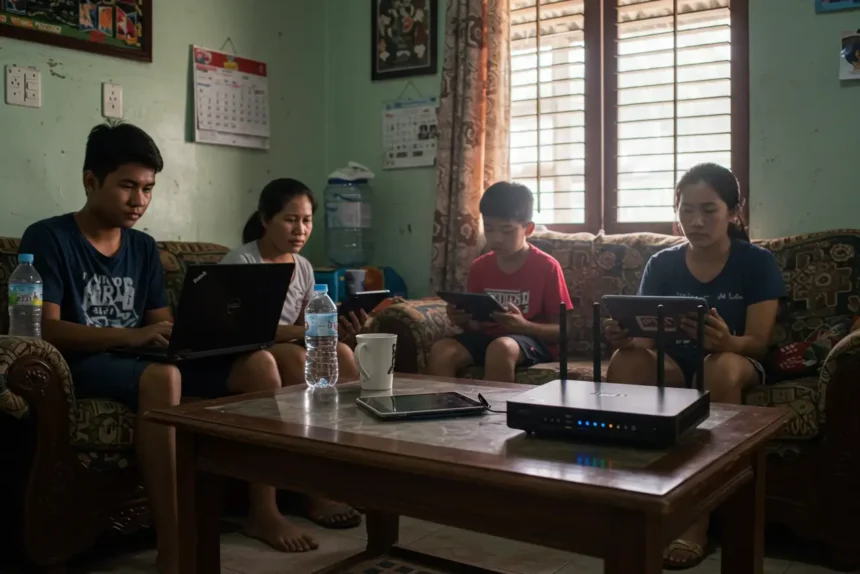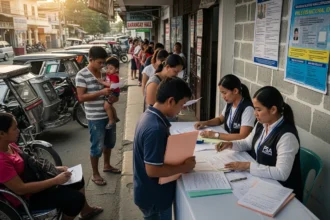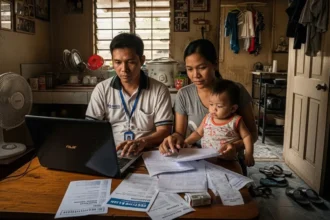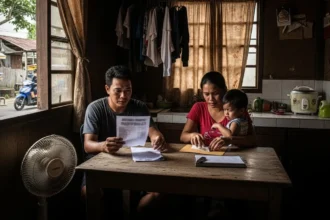In the Philippines, having fast and reliable internet isn’t just a luxury anymore – it’s a lifeline. From work-from-home Zoom calls and online classes, to streaming K-dramas and late-night Mobile Legends battles, everything we do now depends on a stable connection. Kaya nga, nothing’s more frustrating than laggy Wi-Fi or sudden disconnections – parang nakikipaglaban ka sa boss fight, pero kalaban mo pala modem mo.
- 🌍 Coverage & Availability by Region
- ⚡ Speed & Plan Comparison
- 💸 Pricing & Value for Money
- 🛠️ Installation & Set-Up Experience
- 📞 Customer Service & Reliability
- 🎁 Promos & Bundled Deals in 2025
- 📊 At-a-Glance ISP Comparison (2025)
- 🧭 Which ISP Should You Choose?
- ❓ FAQs About Internet Providers in PH
- 🚀 Making the Smart Choice for Your Internet
The tricky part? With so many internet service providers (ISPs) promising “fastest” speeds and “widest” coverage, paano ka pipili? Not every plan fits every household – some are better in the provinces, others are sulit in the city, and some are best if you’re willing to pay premium for guaranteed performance.
That’s why in this 2025 update, we’ll break down the Top 5 Internet Providers in the Philippines – PLDT, Globe, Converge ICT, DITO Telecommunity, and Sky Broadband – plus a look at Starlink for rural areas. We’ll compare coverage, speed, pricing, reliability, and even promos, so you can figure out which one actually delivers for your needs (and your sweldo).
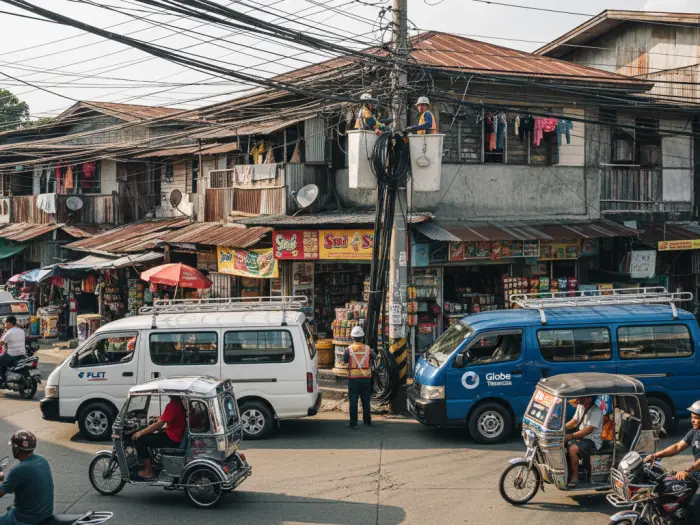
🌍 Coverage & Availability by Region
In the Philippines, internet coverage is often the dealbreaker. You might find the cheapest plan or fastest speed on paper, pero kung hindi available sa lugar mo, sayang lang. That’s why coverage should be the very first thing you check before signing up with any provider. Here’s a closer look at where each ISP stands in 2025:
🏠 PLDT Home
- Website: https://pldthome.com/fiber
-
Reach: PLDT still has the widest fiber coverage nationwide, serving major cities, first-class municipalities, and many second-class towns. Their rollout in Visayas and Mindanao has accelerated, covering cities like Davao, Cagayan de Oro, Iloilo, Bacolod, and even smaller municipalities in Bukidnon and Zamboanga.
-
Urban Strength: In Metro Manila and big cities, PLDT Fiber is almost always available, with multiple plan tiers.
-
Rural Coverage: In far-flung provinces, some households are still on legacy DSL, which struggles with speed and reliability. But PLDT has been slowly upgrading these areas with fiber as part of its modernization.
📶 Globe At Home
- Website: https://shop.globe.com.ph/
-
Reach: Globe is a close rival to PLDT in terms of nationwide presence. They have a strong foothold in urban and suburban areas, and in many neighborhoods, Globe is the only alternative if PLDT slots are full.
-
Urban Strength: Fiber service is widely available in Metro Manila, Cebu, Davao, and other large cities.
-
Rural Coverage: For smaller towns, Globe often uses LTE/5G Home Broadband kits instead of fiber. This makes them a flexible option, especially in barangays where laying fiber is not yet feasible. However, LTE-based home internet can be inconsistent depending on signal strength.
⚡ Converge ICT
- Website: https://www.convergeict.com/super-fiberx
-
Reach: Converge is the fastest-growing fiber ISP, with aggressive rollouts in Luzon (Pampanga, Bulacan, Tarlac, Baguio, NCR) and strong expansions into Visayas and Mindanao (Cebu, Davao, Cagayan de Oro, General Santos).
-
Urban Strength: In cities where Converge is present, it often beats PLDT and Globe in terms of speed-to-price ratio, making it a favorite among budget-conscious households and SMEs.
-
Rural Coverage: Still limited. Many provincial towns, especially outside Luzon, may not yet have Converge access. If available in your barangay, though, it’s often the best bang-for-buck option.
🚀 DITO Telecommunity
- Website: https://dito.ph/postpaid
-
Reach: As the newest player, DITO’s fixed broadband service is only available in select pilot areas as of 2025 – mostly within Metro Manila and nearby CALABARZON cities.
-
Urban Strength: DITO is trying to position itself with competitive pricing to attract early adopters in NCR. Their fiber service is not yet widely available but is steadily expanding.
-
Rural Coverage: Practically non-existent at the moment for fiber. DITO is still heavily focused on its mobile network expansion before aggressively rolling out fixed broadband nationwide.
📡 Sky Broadband
- Website: https://www.mysky.com.ph/home
- Reach: Sky remains concentrated in Metro Manila and major Luzon cities like Baguio, Angeles, and select areas in Visayas. Since PLDT acquired Sky, expansion has slowed, and in some areas, new installations are no longer available.
-
Urban Strength: Households that already have Sky service often keep it bundled with cable TV.
-
Rural Coverage: Very limited. Sky is not a strong option for provinces, and in many cases, existing subscribers are being encouraged to switch to PLDT Fiber.
🛰️ Starlink Philippines
- Website: https://www.starlink.com/
-
Reach: Starlink is the game-changer for 2025. Unlike other ISPs, it doesn’t rely on ground-based infrastructure. With satellite coverage, Starlink can reach almost any barangay – from island communities in Palawan and Siargao to mountain barangays in Ifugao and Bukidnon.
-
Urban Strength: Not the most practical choice in cities where fiber is cheaper and faster.
-
Rural Coverage: The best option for households in remote areas where no fiber, DSL, or LTE home broadband exists. The only downside? Pricing is still premium (equipment + subscription), so it’s not budget-friendly.
👉 Tip for readers: Coverage can be street-specific in the Philippines. Even if a provider is listed as available in your city, certain barangays or subdivisions might not be serviceable due to infrastructure limits. Always confirm via online coverage checkers or through your kapitbahay’s experience.
| Provider | Strong Areas | Weak Areas |
|---|---|---|
| PLDT Home | Nationwide cities & towns, strong in NCR & provinces | Still has DSL-only zones in remote towns |
| Globe At Home | Major cities & suburban areas, wide reach | Rural barangays reliant on LTE/5G kits |
| Converge ICT | Luzon hubs (NCR, Pampanga, Bulacan), growing VisMin | Still absent in many provincial towns |
| DITO | NCR + CALABARZON pilot rollout | Limited coverage outside Metro areas |
| Sky Broadband | Metro Manila, select Luzon & Visayas cities | No strong rural or provincial presence |
| Starlink | Nationwide (satellite) including remote barangays | Expensive for urban households |

⚡ Speed & Plan Comparison
Speed is often the first thing people look at when choosing an ISP – but in the Philippines, the “up to” speeds advertised don’t always match the real-world experience. Here’s how the major players stack up in 2025:
🏠 PLDT Home
-
Advertised Plans: Fiber plans range from 100 Mbps up to 1000 Mbps. Their “Unli Fiber Plus” bundles often include a landline or streaming add-ons.
-
Real-World Performance: In Metro Manila and major cities, PLDT Fiber usually delivers close to advertised speeds, especially on wired connections. Rural DSL users, however, often experience much slower, inconsistent service.
-
Reliability: Good consistency for gamers and streamers in areas with strong fiber rollout. Occasional downtime reports, but generally stable.
📶 Globe At Home
-
Advertised Plans: Fiber plans from 50 Mbps up to 1 Gbps, with bundles for Disney+ or Globe Rewards perks.
-
Real-World Performance: Speeds are strong in urban areas, especially NCR and Cebu. In suburban areas, actual speeds may dip during peak hours. Their LTE/5G Home kits vary – blazing fast if signal is good, frustrating if coverage is weak.
-
Reliability: Decent stability but peak-hour slowdowns are a common user complaint.
⚡ Converge ICT
-
Advertised Plans: Fiber plans typically start at 200 Mbps for ₱1,500, scaling up to 800 Mbps – 1 Gbps for higher tiers.
-
Real-World Performance: Known for delivering near-promised speeds, especially for download. Upload speeds can sometimes lag but are still good for most households.
-
Reliability: Past issues with nationwide downtimes, but service has improved in 2024–2025 with more redundancy added. Still a favorite among budget-conscious gamers and streamers.
🚀 DITO Telecommunity
-
Advertised Plans: Early fiber plans offer 100 Mbps up to 500 Mbps, positioned at lower prices to attract new subscribers.
-
Real-World Performance: Too new for a long track record, but pilot users in Metro Manila report decent speeds close to advertised. Consistency outside NCR is still untested.
-
Reliability: Promising, but reliability remains to be proven as rollout is still small-scale.
📡 Sky Broadband
-
Advertised Plans: Ranges from 30 Mbps up to 200 Mbps depending on area.
-
Real-World Performance: Speeds often dip below advertised during peak hours. Upload speeds are weaker compared to fiber-focused ISPs like Converge.
-
Reliability: Serviceable for basic browsing and streaming, but not ideal for heavy users.
🛰️ Starlink Philippines
-
Advertised Plans: 50–250 Mbps via satellite. Latency is higher (20–60 ms) compared to fiber, but much better than old DSL or mobile broadband in remote areas.
-
Real-World Performance: Consistent across rural and hard-to-reach areas. Weather (heavy rains/typhoons) can still affect stability.
-
Reliability: Strong choice for rural households, but premium cost makes it less practical for cities where fiber is available.
📊 Internet Speed Comparison Table (2025)
| Provider | Advertised Speed Range | Real-World Notes |
|---|---|---|
| PLDT Home | 100 Mbps – 1000 Mbps | Stable fiber in cities; DSL in rural is much slower |
| Globe At Home | 50 Mbps – 1000 Mbps | Fast in cities; LTE/5G kits vary by signal quality |
| Converge ICT | 200 Mbps – 1000 Mbps | Often delivers promised speeds; improved reliability |
| DITO | 100 Mbps – 500 Mbps | Decent in pilot areas; still untested nationwide |
| Sky Broadband | 30 Mbps – 200 Mbps | Slower, dips at peak hours; weaker upload speeds |
| Starlink | 50 Mbps – 250 Mbps | Consistent in remote areas; latency slightly higher |

💸 Pricing & Value for Money
Price is always top of mind for Pinoy households. The “best ISP” isn’t just about speed – it’s about finding the right balance between cost, performance, and what fits your sweldo-to-sweldo budget. Here’s how the providers stack up in 2025:
🏠 PLDT Home
-
Plan Range: Around ₱1,500/month for 100 Mbps, scaling up to ₱6,000+ for 1000 Mbps.
-
Value: Plans often come bundled with a landline, Wi-Fi mesh options, or entertainment perks (like Lionsgate Play).
-
Hidden Costs: Installation fees (~₱3,000) are sometimes waived during promos. Lock-in periods of 24–36 months.
📶 Globe At Home
-
Plan Range: ₱1,499/month for 50 Mbps, up to ₱4,999 for 1 Gbps.
-
Value: Includes Disney+, Viu, or other streaming subscriptions bundled in select tiers. Mobile rewards integration adds extra perks for existing Globe mobile users.
-
Hidden Costs: Standard installation fee (~₱1,499–₱2,000). Lock-in usually 24 months.
⚡ Converge ICT
-
Plan Range: Starts at ₱1,500 for 200 Mbps, up to ₱7,000+ for 1 Gbps enterprise-grade packages.
-
Value: Generally offers the highest Mbps-per-peso ratio among ISPs. Affordable compared to PLDT/Globe, but coverage is more limited.
-
Hidden Costs: Installation fees (~₱2,500–₱3,000). Lock-in 24 months.
🚀 DITO Telecommunity
-
Plan Range: ₱999–₱1,499/month for 100 Mbps, scaling to ₱2,499–₱3,499 for 500 Mbps.
-
Value: Pricing is competitive and undercuts established players. Promos often include waived installation and free routers to attract early adopters.
-
Hidden Costs: Still in trial stage, so some service areas may have limited promo access.
📡 Sky Broadband
-
Plan Range: ₱999 for 30 Mbps up to ₱2,999 for 200 Mbps.
-
Value: Affordable entry-level plans, but max speed is limited compared to fiber-first ISPs. Best for households with light browsing/streaming needs.
-
Hidden Costs: Installation fees (~₱1,499), 24-month lock-in. Some areas no longer accept new subscribers due to PLDT acquisition.
🛰️ Starlink Philippines
-
Plan Range: Around ₱2,700–₱3,000/month plus ₱29,000–₱30,000 for equipment kit (dish + router).
-
Value: Pricier than local ISPs, but it’s the only option for rural/remote barangays. No lock-in; subscription can be paused.
-
Hidden Costs: High upfront equipment cost.
📊 Internet Pricing Comparison Table (2025)
| Provider | Starting Price | Top-Tier Price | Value Notes |
|---|---|---|---|
| PLDT Home | ₱1,500 (100 Mbps) | ₱6,000+ (1 Gbps) | Bundles w/ landline, streaming; higher lock-in |
| Globe At Home | ₱1,499 (50 Mbps) | ₱4,999 (1 Gbps) | Includes Disney+/Viu, perks for Globe mobile users |
| Converge ICT | ₱1,500 (200 Mbps) | ₱7,000+ (1 Gbps) | Best Mbps-per-peso ratio, but coverage limited |
| DITO | ₱999 (100 Mbps) | ₱3,499 (500 Mbps) | Competitive pricing; often free install promos |
| Sky Broadband | ₱999 (30 Mbps) | ₱2,999 (200 Mbps) | Budget-friendly entry-level, slower max speeds |
| Starlink | ₱2,700–₱3,000 | Same (flat pricing) | Covers rural areas; pricey kit (~₱30k) upfront |
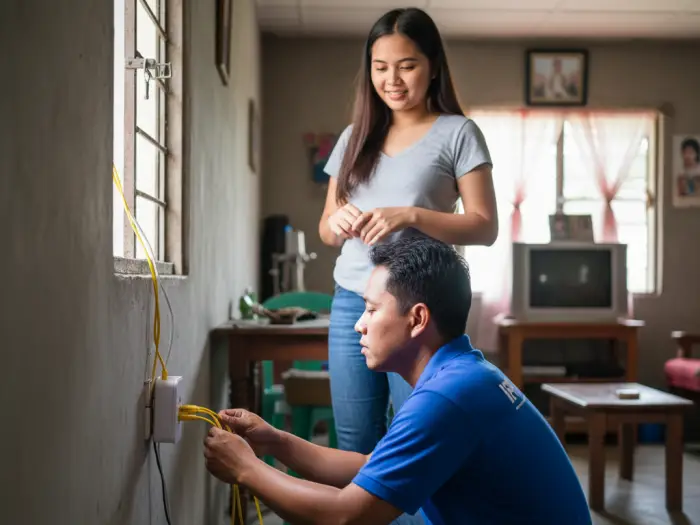
🛠️ Installation & Set-Up Experience
Getting connected isn’t always instant. In the Philippines, installation can involve paperwork, fees, and waiting times that vary depending on the ISP and your location. Here’s what to expect with each provider in 2025:
🏠 PLDT Home
-
Requirements: 1 valid government ID, proof of billing (or barangay certificate if renting), and application form.
-
Upfront Costs: Standard installation fee ~₱3,000, often waived during promos. Some plans require a one-month advance payment.
-
Process: After approval, installation usually takes 5–10 working days in cities. In provinces, it may stretch to 2–3 weeks due to limited technicians.
-
Equipment: Router and landline unit (if included) are bundled free. Mesh Wi-Fi upgrades are offered but at extra cost.
-
Customer Expectation: Technicians will run fiber lines into the house, which may require minor drilling. Speed testing is done on-site before sign-off.
📶 Globe At Home
-
Requirements: Valid ID, proof of billing, and sometimes employment certificate or barangay clearance for renters.
-
Upfront Costs: Installation fee ₱1,499–₱2,000 depending on promo. One month advance payment may apply.
-
Process: Installation timeline is 7–14 days, though some Metro Manila customers report same-week setups.
-
Equipment: Router included, with optional Wi-Fi mesh at extra cost. Globe also offers 5G/LTE “plug-and-play” modems, which are activated within 24 hours.
-
Customer Expectation: Globe’s technicians handle setup and router configuration. Fiber lines may be shared in subdivisions, so ask about ports availability before applying.
⚡ Converge ICT
-
Requirements: Government ID, proof of billing, signed service contract.
-
Upfront Costs: Installation fee ₱2,500–₱3,000. One month deposit in some cases.
-
Process: Known for longer waiting times – 2–3 weeks depending on location. They’re improving, but rural rollouts are slower.
-
Equipment: Standard router included, mesh options available.
-
Customer Expectation: Techs will install fiber and configure the modem. Expect longer queues if applying during promo periods (like back-to-school or holidays).
🚀 DITO Telecommunity
-
Requirements: Valid ID and address verification. Currently selective since rollout is limited.
-
Upfront Costs: Often waived installation fees for early adopters. Some plans require only the first month upfront.
-
Process: Faster installs in NCR – usually within 5–7 days – since DITO is eager to build its fixed broadband base.
-
Equipment: Free router bundled. Some areas get upgraded mesh systems during promos.
-
Customer Expectation: Still in pilot phase, so customer experience may vary. Tech support is limited compared to PLDT/Globe scale.
📡 Sky Broadband
-
Requirements: Valid ID, proof of billing. In some cities, a cable connection check is required first.
-
Upfront Costs: Around ₱1,499 installation, waived during selected promos.
-
Process: Installation can be 5–7 working days in active service areas, though many provinces no longer accept new sign-ups.
-
Equipment: Router and cable modem provided.
-
Customer Expectation: Because of PLDT’s acquisition, some areas are being transitioned into PLDT Fiber. Expect service shifts in 2025.
🛰️ Starlink Philippines
-
Requirements: None beyond online application and payment. Available nationwide.
-
Upfront Costs: Equipment kit (dish + router) costs around ₱29,000–₱30,000 upfront, plus monthly ₱2,700–₱3,000 subscription.
-
Process: DIY. The kit is shipped to your doorstep and can be set up the same day. Setup involves pointing the dish toward the sky and connecting to power.
-
Equipment: Dish, router, and cables included in the kit.
-
Customer Expectation: Installation is straightforward but requires an open sky view for best signal. Weather may affect performance slightly.
👉 Reader tip: Always ask about lock-in periods and installation promos. Some ISPs waive installation fees during seasonal promos, while others may include free routers or even streaming bundles. For renters, prepare barangay certificates or authorization letters since proof of billing can sometimes be tricky.
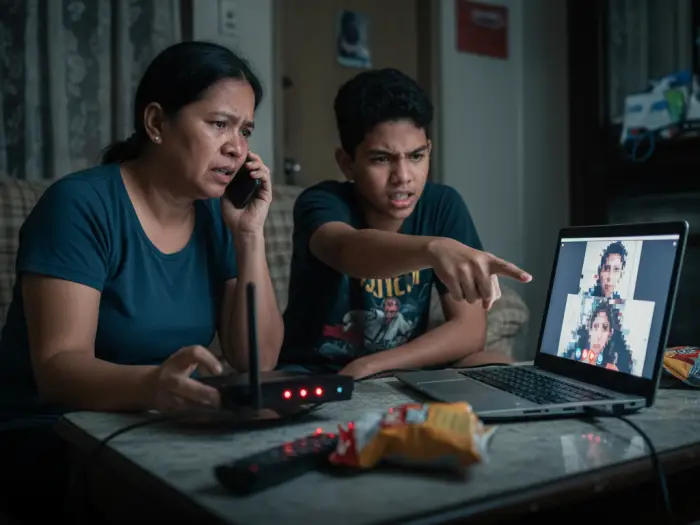
📞 Customer Service & Reliability
In the Philippines, internet speed is one thing, pero service reliability and customer support are another story. An ISP can look great on paper, pero kung madalas down at mahirap abutin ang hotline, expect headaches. Here’s how the top providers stack up when it comes to real-world stability and customer care in 2025:
🏠 PLDT Home
-
Reliability: PLDT Fiber is generally stable once installed, especially in major cities. Outages happen, but less frequent than smaller ISPs. DSL areas remain unreliable.
-
Customer Service Pros: Nationwide service centers, multiple hotlines, and online app for billing/complaints.
-
Customer Service Cons: Long wait times for tech visits, slow ticket resolutions in provinces. Complaints about hotline queues are still common.
Verdict: Strong fiber reliability, but customer service reputation remains mixed.
📶 Globe At Home
-
Reliability: Solid in urban centers, though suburban/rural users report occasional slowdowns during peak hours. 5G Home kits depend heavily on signal strength.
-
Customer Service Pros: GlobeOne app makes payments, troubleshooting, and plan upgrades easier. Fast social media support (Twitter/X, FB).
-
Customer Service Cons: Hotline wait times can be long. Some users say field techs take several days to respond to issues.
Verdict: Better app support than PLDT, but consistency in after-sales service still depends on location.
⚡ Converge ICT
-
Reliability: Known for bang-for-buck speed but had a history of nationwide downtimes (especially 2021–2023). Improved redundancy and backup lines now make outages less frequent in 2025.
-
Customer Service Pros: Competitive pricing means users are often more forgiving. Billing is straightforward.
-
Customer Service Cons: Poor reputation for responsiveness – hotlines and email tickets can take days to weeks. Some subscribers resort to Facebook groups for updates during downtime.
Verdict: Great value if you prioritize speed and price over fast customer support.
🚀 DITO Telecommunity
-
Reliability: Still too new for long-term reliability stats. Pilot users in NCR report decent uptime with minor interruptions.
-
Customer Service Pros: Eager to win customers – hotline queues are shorter, and installs are quicker since subscriber base is smaller.
-
Customer Service Cons: Limited service infrastructure; customer support may struggle as the user base grows. No widespread provincial support yet.
Verdict: Promising newcomer, but reliability still unproven nationwide.
📡 Sky Broadband
-
Reliability: Speeds are okay for casual browsing and streaming, but upload speeds are weaker than fiber ISPs. Outages more frequent compared to PLDT/Globe fiber.
-
Customer Service Pros: Smaller subscriber base in cities means faster hotline pickup in some areas.
-
Customer Service Cons: Transition issues with PLDT acquisition lead to confusion on service continuity. Some users report delayed tickets.
Verdict: Serviceable for existing subs, but future uncertain with PLDT’s takeover.
🛰️ Starlink Philippines
-
Reliability: Very consistent speeds (50–250 Mbps), unaffected by local telco infra. Latency slightly higher than fiber but stable. Heavy rains/typhoons may cause minor drops.
-
Customer Service Pros: Simple online account dashboard. Subscription can be paused anytime. Replacement parts can be ordered online directly.
-
Customer Service Cons: Limited local customer service – most support is via email/online, no physical offices. Equipment warranty claims can take weeks.
Verdict: Extremely reliable for rural areas, but customer support is less personalized compared to local ISPs.
📊 Reliability & Customer Service Snapshot
| Provider | Reliability | Customer Service Reputation |
|---|---|---|
| PLDT Home | Stable fiber, weak DSL areas | Mixed: stable service but hotline complaints |
| Globe At Home | Solid in cities, peak-hour slowdowns possible | Strong app support, hotline delays |
| Converge ICT | High speed-to-price ratio, improved uptime | Weak responsiveness, long ticket resolutions |
| DITO | Decent so far, still unproven long-term | Shorter queues now, limited infra support |
| Sky Broadband | Okay for browsing/streaming, frequent dips | Smaller base = faster hotline in some areas |
| Starlink | Consistent in rural areas, weather-sensitive | Online/email only, slower warranty claims |
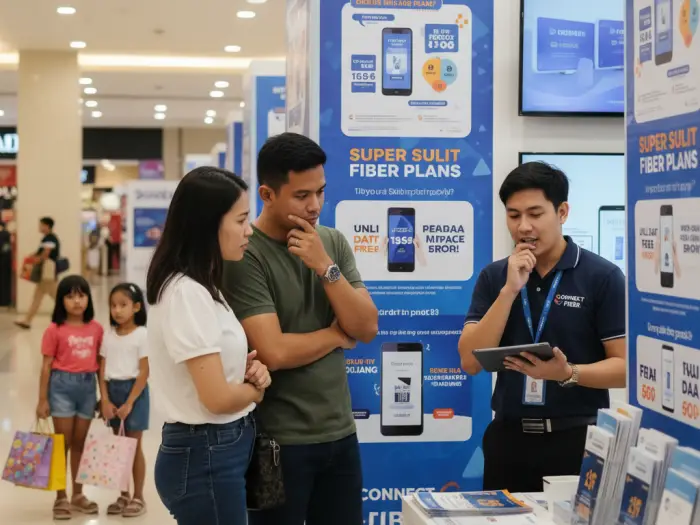
🎁 Promos & Bundled Deals in 2025
Every Pinoy loves a freebie – and ISPs know it. Aside from speed and price, promos and bundles can sweeten the deal. Here’s what you can expect in 2025:
🏠 PLDT Home
-
Often waives installation fees during big promos (summer, back-to-school, Christmas).
-
Bundled with landline and sometimes Lionsgate Play or NBA League Pass for higher-tier plans.
-
Free Wi-Fi mesh units available on select promos for multi-story homes.
📶 Globe At Home
-
Commonly includes Disney+ or Viu subscriptions in mid-to-high tier plans.
-
Waived installation during sign-up promos.
-
Integration with Globe Rewards gives points for every bill payment.
⚡ Converge ICT
-
Known for straightforward pricing – fewer bundles, but lots of seasonal promos like free installation or discounted fees.
-
Occasionally offers extra speed boosts for the first 3–6 months of subscription.
🚀 DITO Telecommunity
-
As the newest player, they’re aggressive: free installation, free routers, and lower introductory prices in pilot areas.
-
Expect early-bird promos in new rollout zones.
📡 Sky Broadband
-
Bundled with Sky Cable TV plans, often cheaper than getting them separately.
-
Free installation promos still available in areas where new sign-ups are accepted.
🛰️ Starlink Philippines
-
Promos are rare since pricing is standardized globally.
-
Occasionally offers reduced equipment costs or free shipping for early adopters.
👉 Reader tip: If you’re not in a rush, wait for seasonal promos. ISPs often waive ₱1,500–₱3,000 installation fees during back-to-school months (June), holiday season (Nov–Dec), or summer campaigns. That alone can save you a big chunk upfront.
📊 At-a-Glance ISP Comparison (2025)
| Provider | Coverage | Speed Range | Starting Price | Reliability & Notes |
|---|---|---|---|---|
| PLDT Home | Widest nationwide (fiber in most cities; DSL in some rural areas) | 100 Mbps – 1000 Mbps | ₱1,500/month | Stable fiber, mixed reviews on customer service |
| Globe At Home | Strong in NCR, big cities, LTE/5G in rural | 50 Mbps – 1000 Mbps | ₱1,499/month | Solid in cities, LTE/5G varies by signal |
| Converge ICT | Rapid expansion, strongest in Luzon, now in VisMin cities | 200 Mbps – 1000 Mbps | ₱1,500/month | Delivers advertised speeds, weaker support |
| DITO | Limited to NCR & CALABARZON pilot areas | 100 Mbps – 500 Mbps | ₱999/month | Competitive new player, reliability unproven |
| Sky Broadband | Metro Manila & select Luzon/Visayas cities | 30 Mbps – 200 Mbps | ₱999/month | Affordable, but max speeds are low, uncertain future |
| Starlink | Nationwide (satellite, even remote barangays) | 50 Mbps – 250 Mbps | ₱2,700–₱3,000/month (₱30k kit upfront) | Consistent in remote areas, pricey for cities |
👉 This table acts as a cheat sheet for readers who don’t want to scroll through all the details.
🧭 Which ISP Should You Choose?
After all the comparisons, the big question remains: sino ba talaga ang best ISP for you? The truth is, there’s no single “best” – it really depends on where you live, your budget, and what you use the internet for. Here’s a quick guide based on common Pinoy scenarios:
-
For Rural Areas with No Fiber Access
👉 Starlink is your most reliable bet, though pricey. If your barangay has Globe LTE/5G Home kits, those can be a cheaper alternative (signal permitting). -
For Budget-Conscious Households
👉 Converge ICT offers the best Mbps-per-peso ratio where available. If not, DITO is aggressively pricing plans (₱999–₱1,499) in its rollout zones. -
For Heavy Streamers & Gamers in Metro Areas
👉 PLDT Home Fiber or Converge ICT high-tier plans are your safest options. Both deliver high speeds (500 Mbps–1 Gbps) suitable for streaming 4K or lag-free gaming. -
For Families Who Want Bundled Perks
👉 Globe At Home is solid for households that value entertainment bundles (Disney+, Viu) or already use Globe mobile services. You can save more with their integrated ecosystem. -
For Households with Existing Cable TV
👉 Sky Broadband still makes sense if you’re keeping Sky Cable, though long-term, transitioning to PLDT Fiber may be inevitable. -
For Remote Workers Who Need Guaranteed Uptime
👉 Go with PLDT or Converge Fiber if available. For rural freelancers or WFH pros, Starlink can be worth the premium cost for stability.
👉 Final tip: Coverage is king. Even if you want the “fastest” provider, it won’t matter if they’re not available in your barangay. Always check actual serviceability online or ask your kapitbahay. Real-world reliability can vary street by street.
❓ FAQs About Internet Providers in PH
Q1: Which internet provider has the widest coverage in the Philippines?
PLDT still leads in nationwide coverage, with Globe as a close second. Converge is catching up fast but remains limited in rural areas.
Q2: Who offers the fastest internet in the Philippines in 2025?
Converge and PLDT both offer up to 1 Gbps plans, with Globe also rolling out 1 Gbps fiber. In practice, Converge often delivers closer to advertised speeds.
Q3: What is the cheapest internet plan in the Philippines right now?
DITO and Sky Broadband have entry-level plans starting at ₱999 per month. Converge offers 200 Mbps at ₱1,500, which is the best Mbps-per-peso deal.
Q4: Is Starlink worth it in the Philippines?
Starlink is worth considering if you live in remote areas with no fiber or DSL coverage. For cities, fiber plans are cheaper and faster.
Q5: Which internet provider is best for online gaming?
PLDT Fiber and Converge ICT are top choices for gamers because of lower latency and stable speeds. Globe is decent in strong coverage areas but may lag during peak hours.
Q6: How long does internet installation usually take?
Installation can take 5–14 days for PLDT and Globe, and 2–3 weeks for Converge. DITO installs are faster in pilot areas, while Starlink is DIY and can be set up in one day.
Q7: Do ISPs in the Philippines have data caps?
Most fiber plans are unlimited with no strict data caps. LTE/5G Home kits from Globe and some rural connections may apply fair usage policies.
Q8: Which ISP has the best customer service?
Globe is praised for its mobile app and online support. PLDT has better infrastructure but hotline queues can be long, while Converge struggles with responsiveness despite good speeds.
Q9: Are there free installation promos available?
Yes, PLDT, Globe, and Converge often waive ₱1,500–₱3,000 installation fees during seasonal promos. DITO frequently offers free installation in new rollout areas.
Q10: How do I know which ISP is best in my area?
The best way is to use online coverage checkers and ask neighbors about their experience. Reliability in the Philippines can vary barangay by barangay.
🚀 Making the Smart Choice for Your Internet
Choosing the right internet provider in the Philippines isn’t just about chasing the fastest speeds or the lowest price tag – it’s about finding what actually works in your area and fits your lifestyle.
Here’s a quick recap to guide you:
-
Check coverage first. Even the best ISP won’t matter if your barangay isn’t serviceable.
-
Match speed to your needs. 50–100 Mbps is fine for casual users, while gamers and big families may want 300 Mbps and up.
-
Compare promos and bundles. Free installation, streaming subscriptions, or router upgrades can save you thousands.
-
Think long-term. Reliability and decent customer service will save you more stress than a cheap plan with constant downtime.
At the end of the day, the “best ISP” is the one that keeps you connected – whether that’s PLDT or Converge for gamers, Globe for bundled perks, DITO for budget-friendly plans, Sky for cable combos, or Starlink for rural barangays.
👉 Do your homework, ask your kapitbahay, and don’t be afraid to switch if your current provider isn’t delivering. In a world where so much of our sweldo-to-sweldo life runs online, a stable connection isn’t just convenience – it’s survival.



